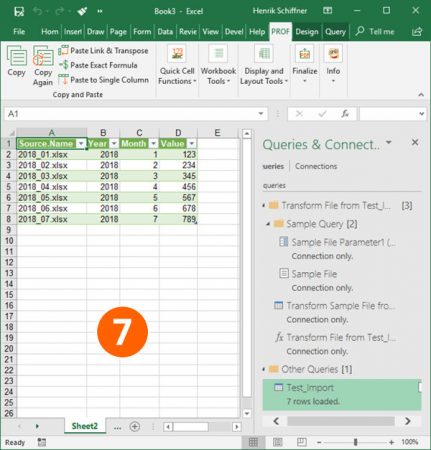5 Easy Ways to Merge Excel Sheets Into One

The need to merge Excel sheets arises frequently, whether you're a data analyst, an office manager, or just organizing personal data. This can be a daunting task when dealing with multiple files, complex data structures, or when trying to consolidate information from various sources. Here are five straightforward methods to combine Excel sheets efficiently, ensuring your data remains intact and well-organized.
1. Using Excel’s Built-In Consolidation Tool

Excel provides a powerful yet simple consolidation tool:
- Open all Excel files you want to merge into one master workbook.
- Choose a blank worksheet where the consolidated data will go.
- Go to the Data tab, and select Consolidate.
- Under the Function dropdown, select how you want to combine data (e.g., Sum, Average, Count).
- In the Reference box, select the data range from each open sheet you wish to merge.
- Repeat this for each sheet, clicking Add after each range selection.
- Enable the Create links to source data if you wish to update the master sheet when changes occur in the source sheets.
- Click OK, and Excel will merge the data.
📝 Note: The consolidation tool doesn't automatically update; you must manually refresh the consolidation if source data changes.
2. Excel Power Query for Data Merging

Power Query offers a dynamic way to merge Excel sheets:
- Activate Power Query by navigating to the Data tab and selecting Get Data > From File > From Workbook.
- Select the workbook with multiple sheets or individual files you want to combine.
- After selecting, Excel will provide a navigation pane showing all sheets. Check the sheets you want to merge and click Load.
- Power Query will open with your selected data. Here, you can transform and reshape your data if needed.
- To merge, select Append Queries from the Home tab, and choose how to merge (Append Queries or Merge).
- Save your transformed data in your worksheet by clicking Close & Load.
3. VBA Macros for Excel Sheet Merging

For those comfortable with coding, VBA can automate the process:
- Open the Excel workbook in which you want to create the macro.
- Press Alt + F11 to open the VBA editor.
- Insert a new module by going to Insert > Module.
- Paste the following VBA code into the module window:
Sub MergeSheets() Dim wsDest As Worksheet Dim wsSource As Worksheet Dim lastRow As LongSet wsDest = ThisWorkbook.Sheets(1) For Each wsSource In ThisWorkbook.Worksheets If wsSource.Name <> wsDest.Name Then lastRow = wsDest.Cells(wsDest.Rows.Count, "A").End(xlUp).Row + 1 wsSource.UsedRange.Copy Destination:=wsDest.Cells(lastRow, 1) End If Next wsSource
End Sub
💡 Note: Be cautious with large datasets; VBA scripts can slow down your computer or potentially freeze Excel if not optimized.
4. Using Third-Party Software

When dealing with non-Excel files or needing specialized merging options, third-party software can be beneficial:
- Tools like Ablebits Merge Tables Wizard, Kutools for Excel, or Professor Excel Tools offer advanced merging features.
- These tools can handle different file formats, merge based on criteria, and often come with UI for easier configuration.
5. Manual Copy-Paste Technique

For smaller datasets, manual copying can be efficient:
- Open each workbook or sheet you wish to combine.
- Select the data range you need.
- Right-click and choose Copy, or use the shortcut Ctrl + C.
- Go to the target sheet, place your cursor where you want the data to start, and paste (Ctrl + V).
- Repeat for all sheets, ensuring consistent formatting and data structure to avoid errors.
🚀 Note: For larger datasets, this method can be cumbersome and prone to human error.
In wrapping up, merging Excel sheets can range from a simple copy-paste exercise to leveraging Excel’s built-in tools, programming with VBA, or utilizing third-party software. Each method has its strengths, from preserving data integrity, handling large datasets, to automating repetitive tasks. By choosing the right technique based on your data complexity and the frequency of the task, you can streamline your workflow and reduce the potential for errors. Now, you can manage your data merging tasks with ease, ensuring your Excel sheets come together like puzzle pieces, creating a cohesive dataset for analysis or reporting.
Can I merge Excel sheets from different files?

+
Yes, you can merge sheets from different files using Excel’s Power Query or third-party tools. Ensure that all files are in the same directory or accessible for the software to locate them.
Will my cell formulas be preserved when I merge sheets?

+
Not all methods preserve cell formulas. The consolidation tool and manual copy-paste methods generally keep them intact, while VBA and Power Query might require adjustments for formulas to work correctly post-merging.
How do I handle mismatched headers in different sheets?

+
Standardize headers across sheets before merging to avoid data misalignment. If headers differ, you can use Power Query to align or manually adjust headers before merging.